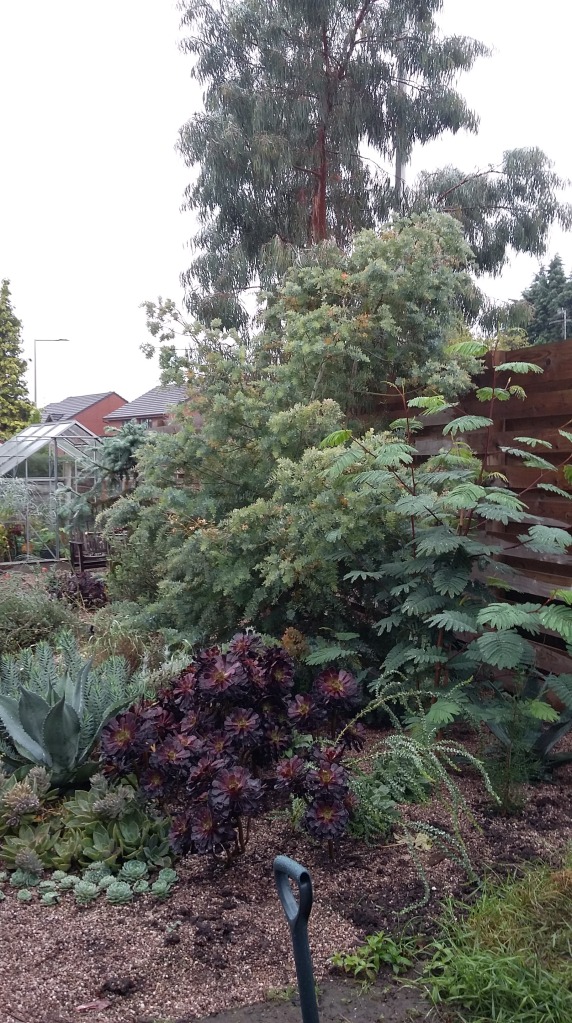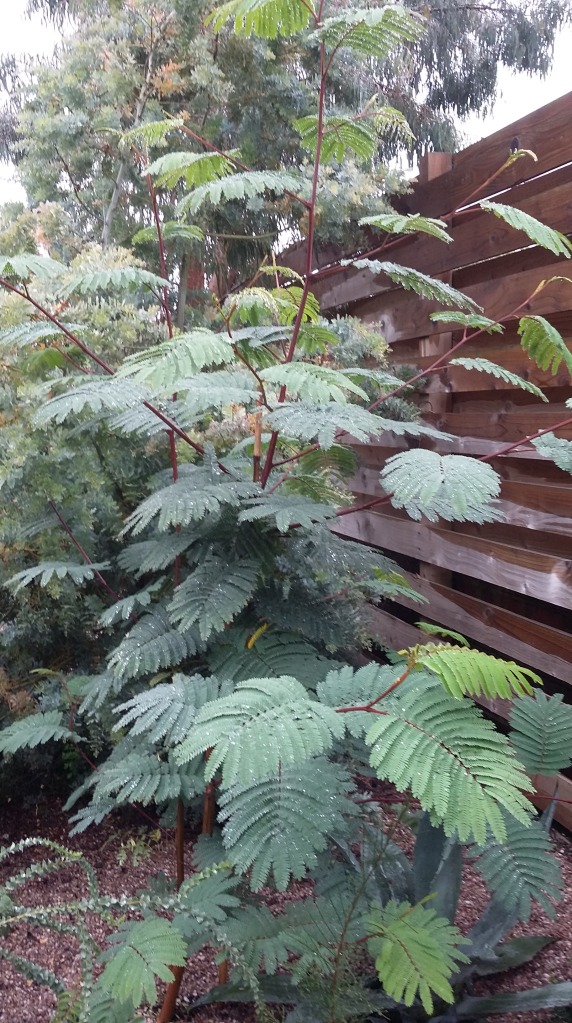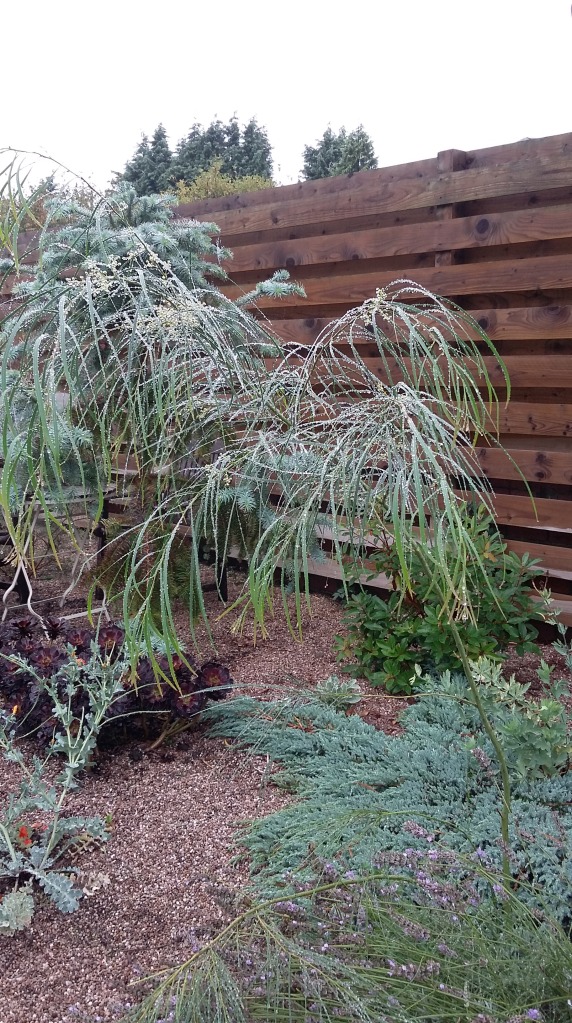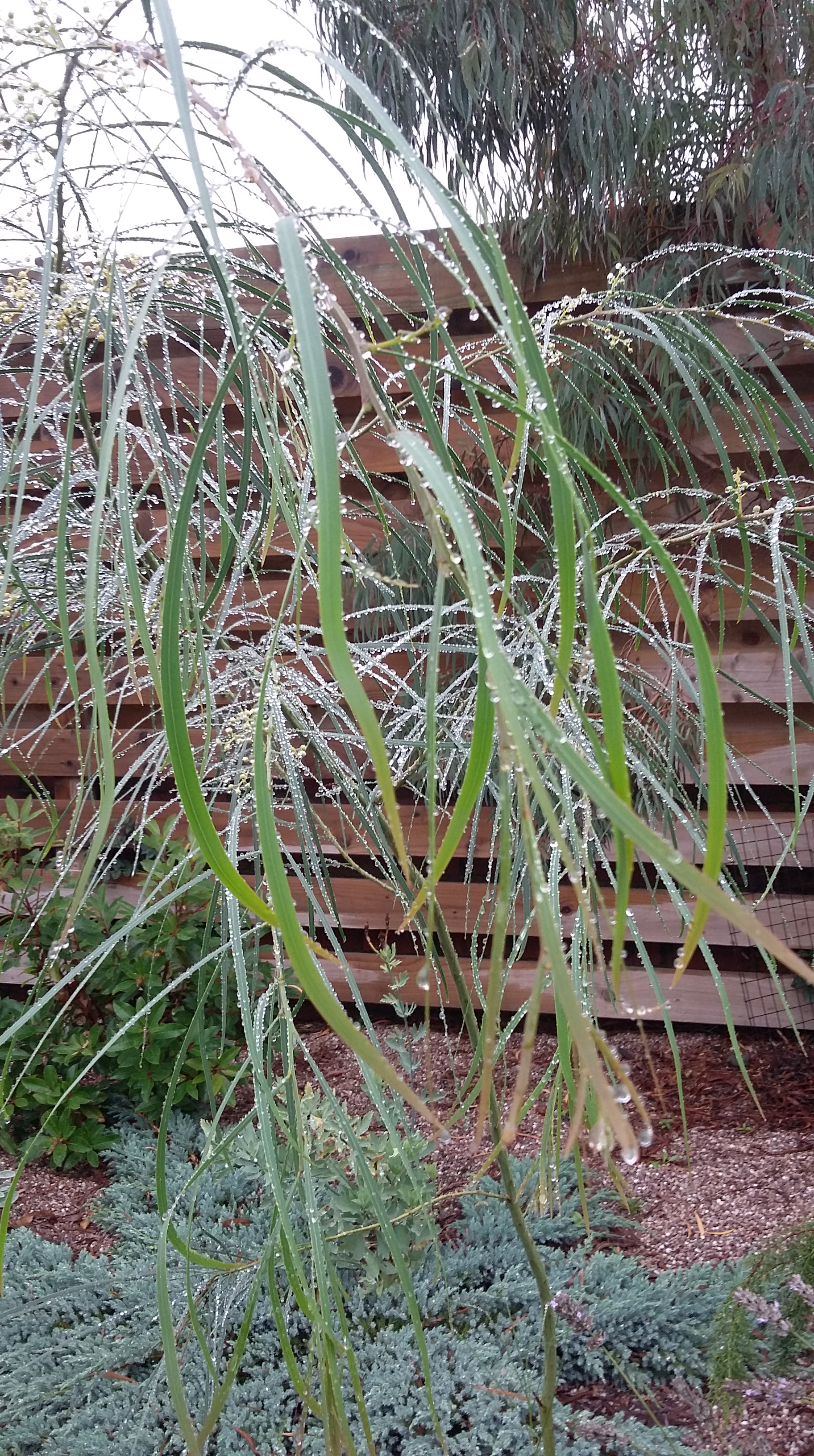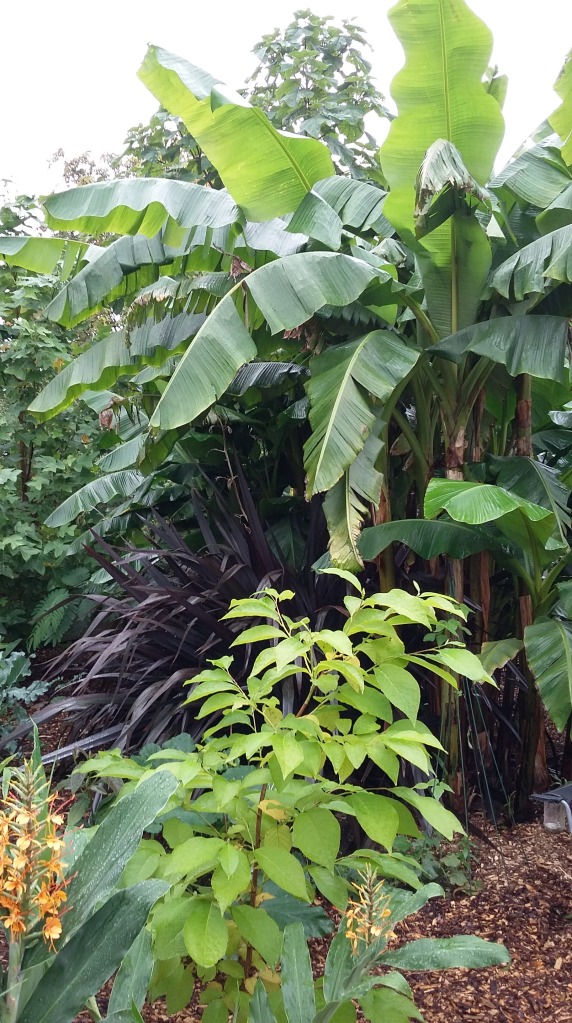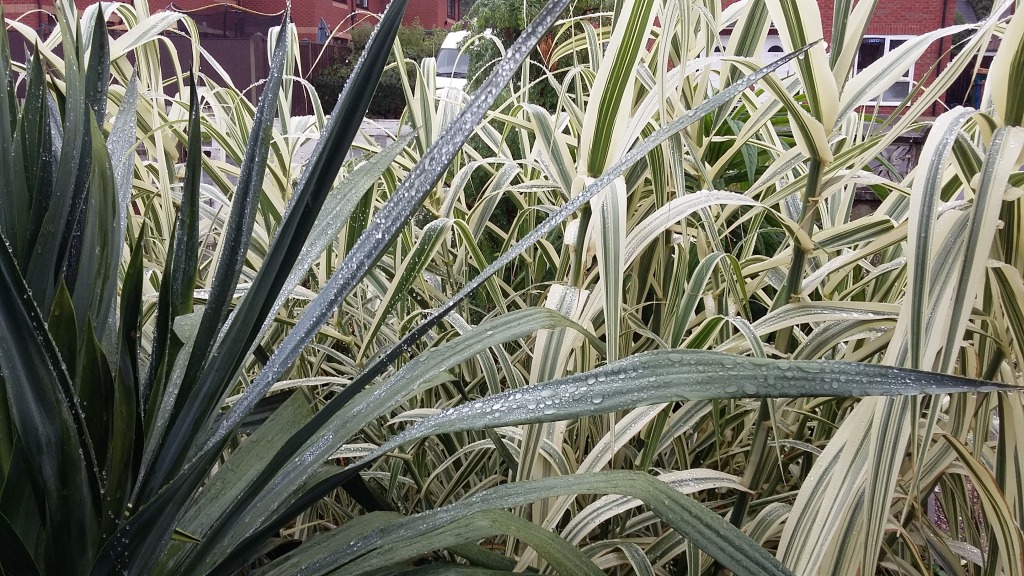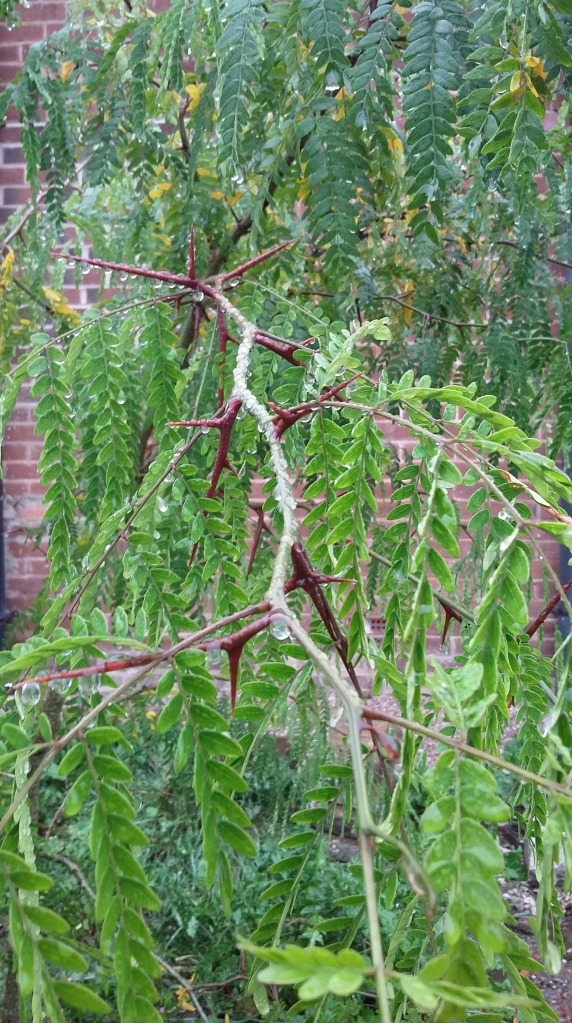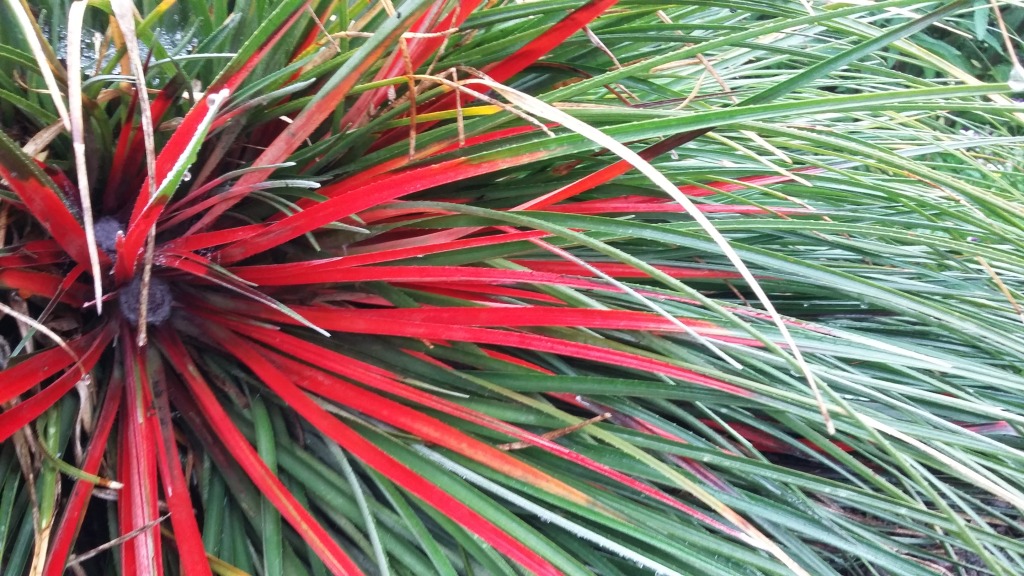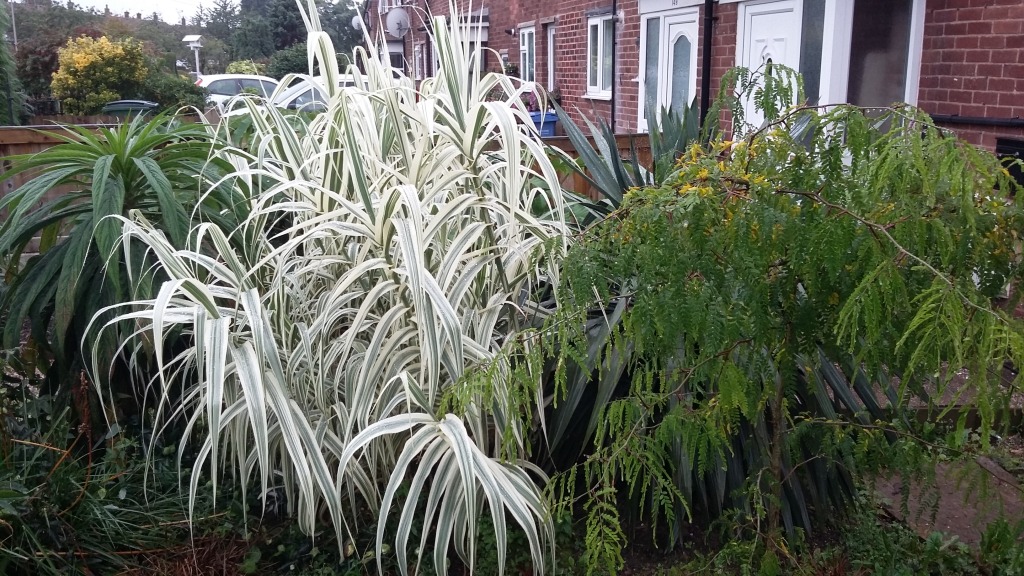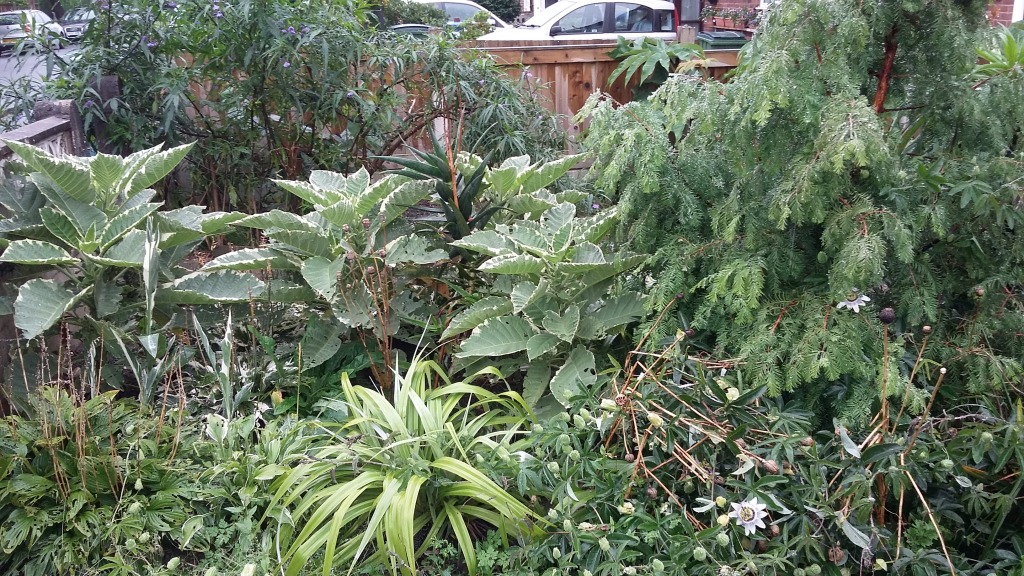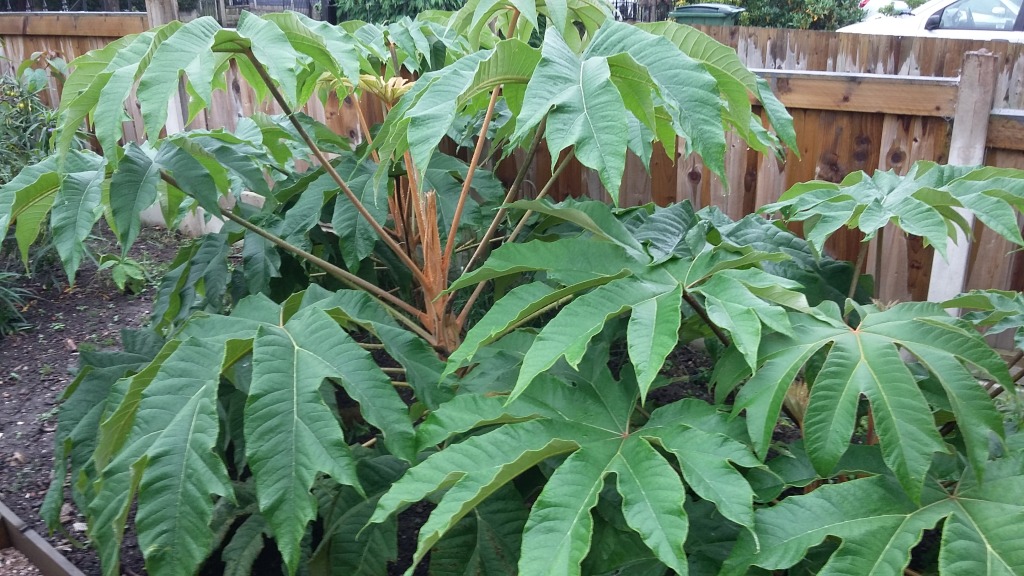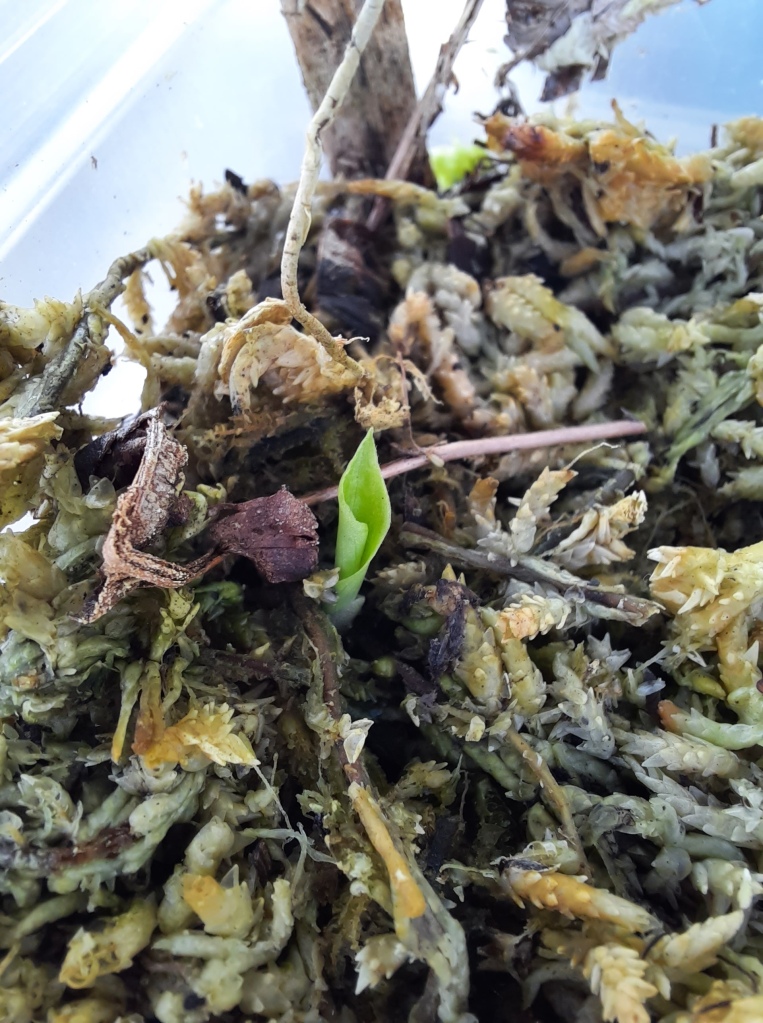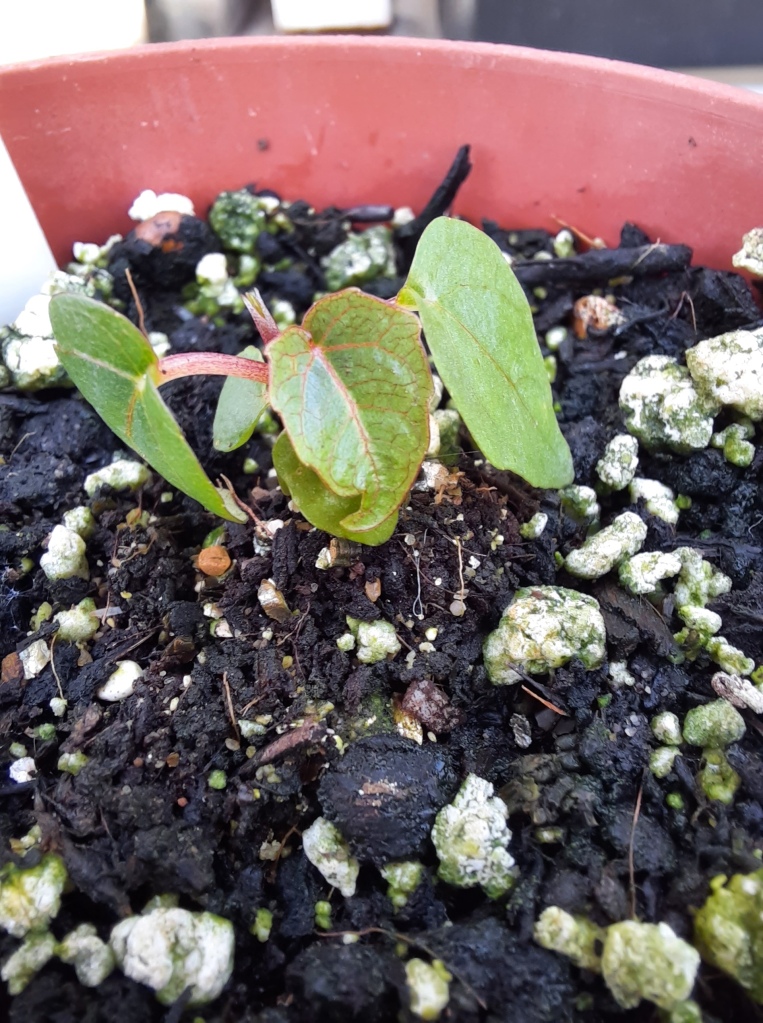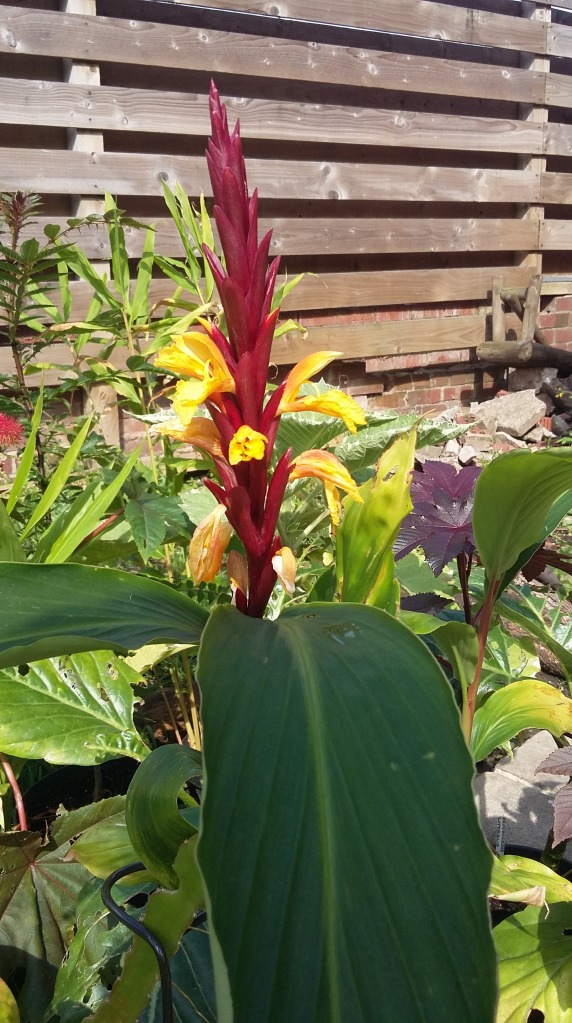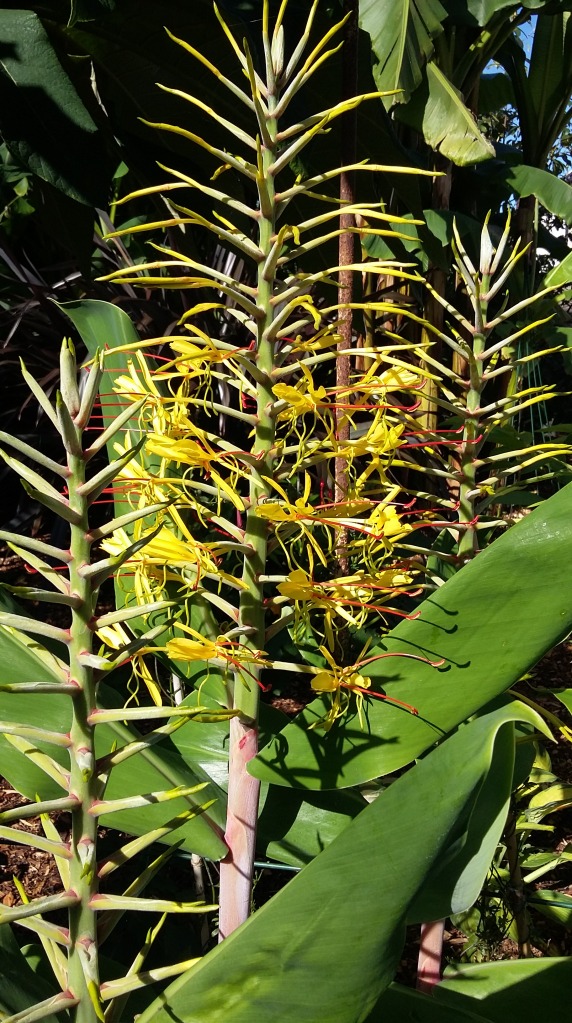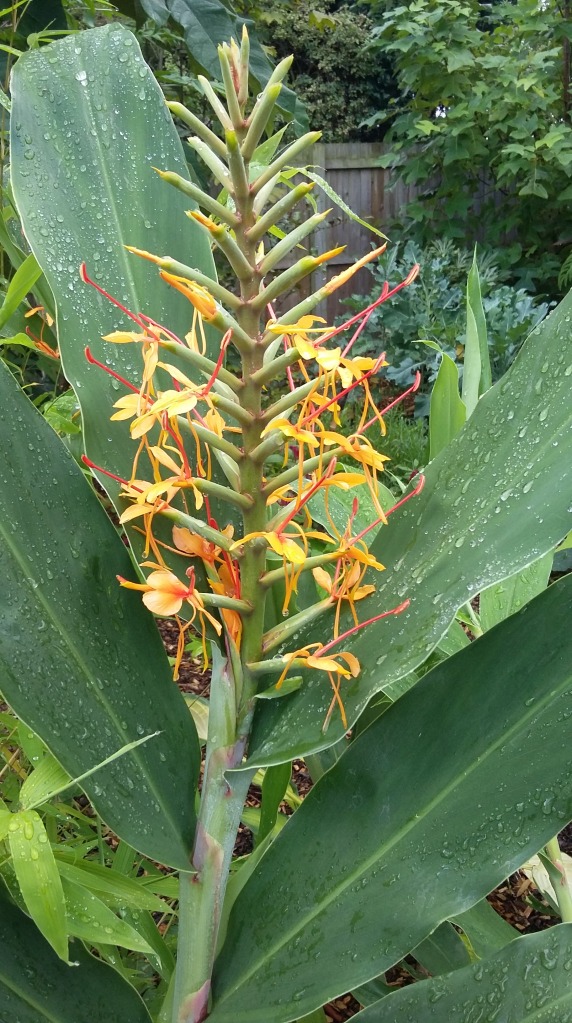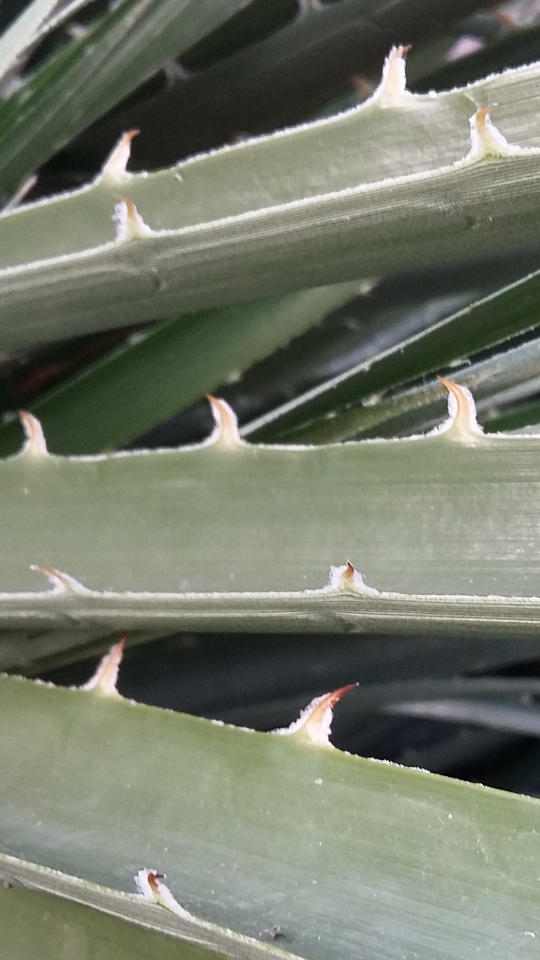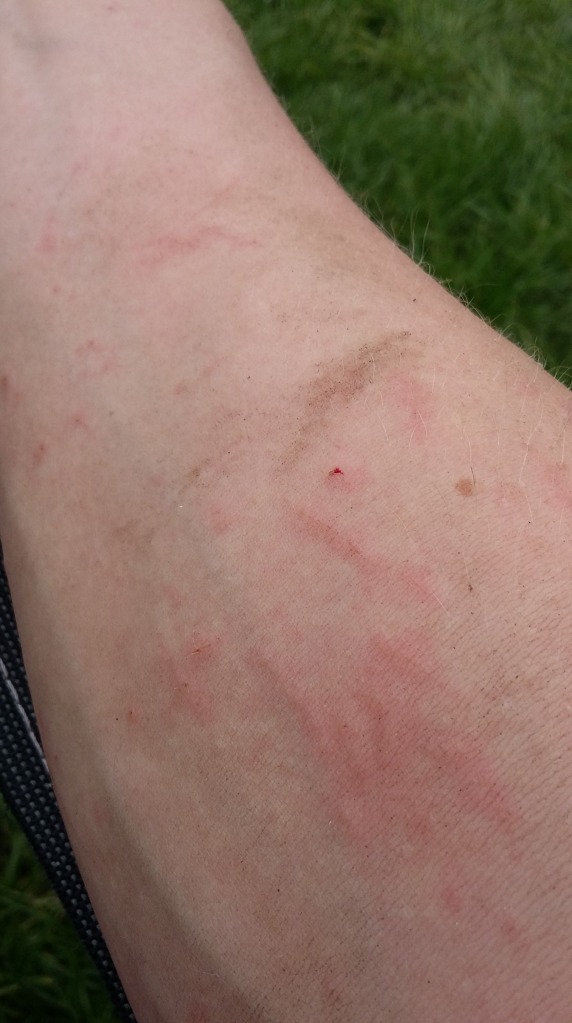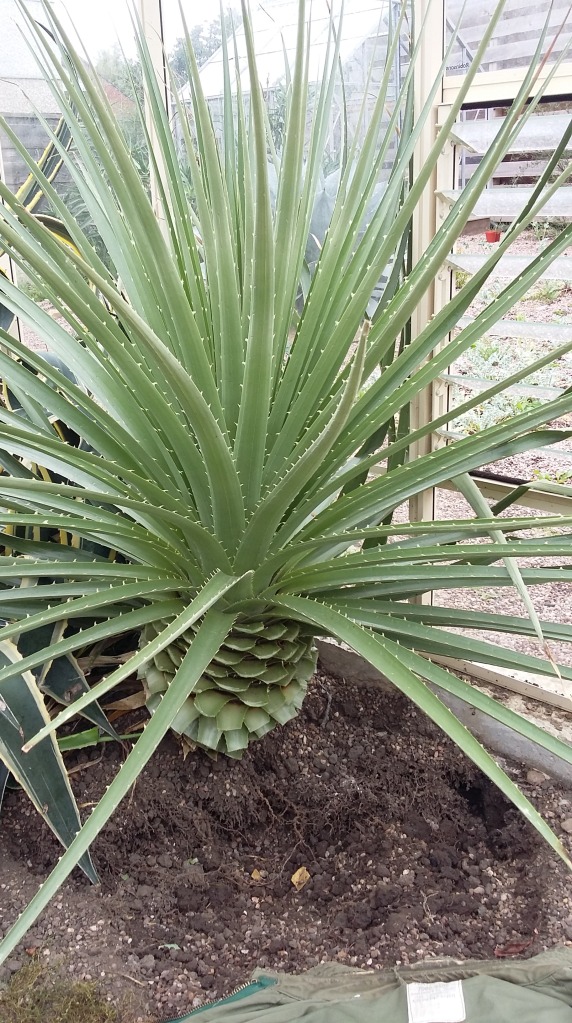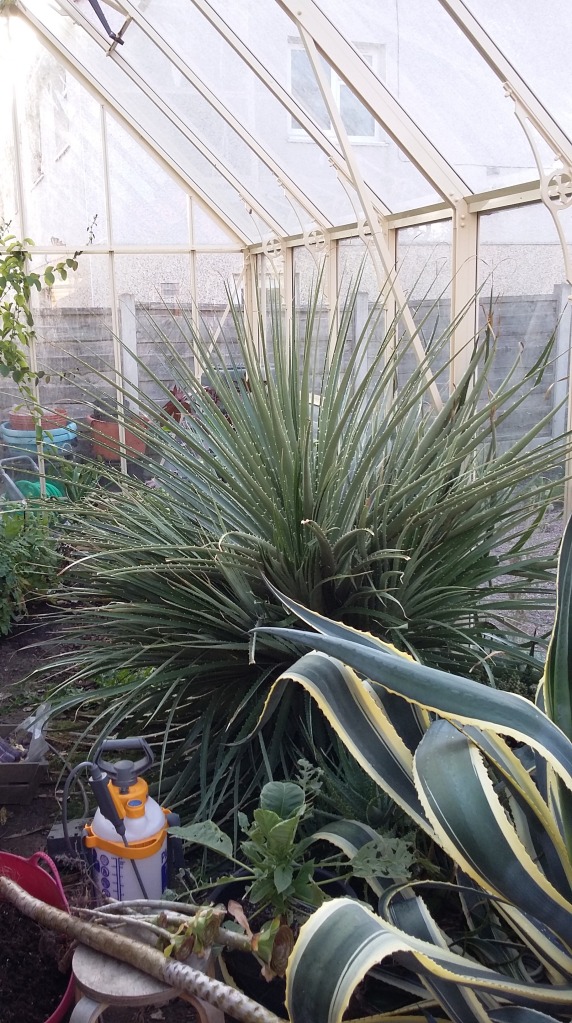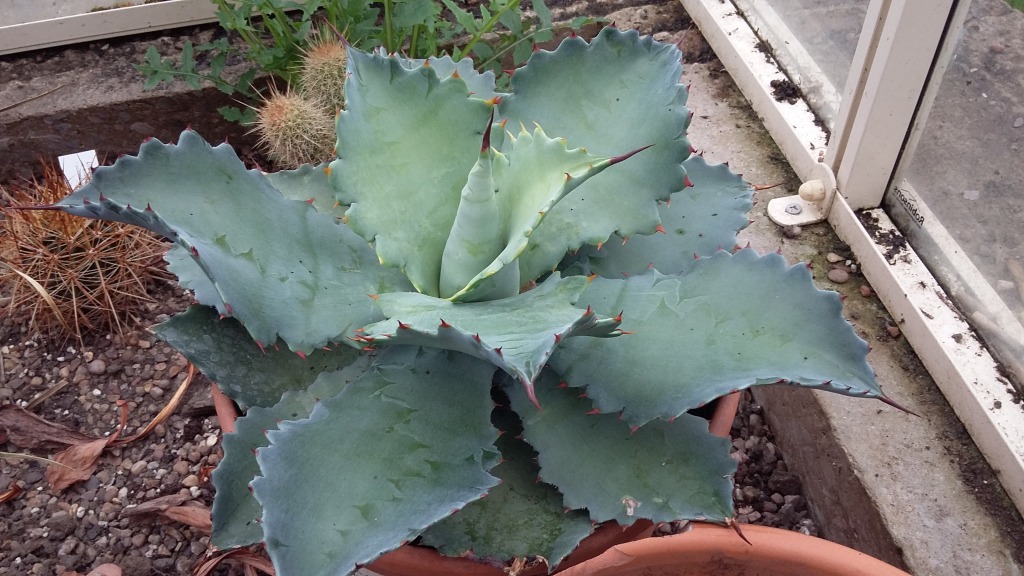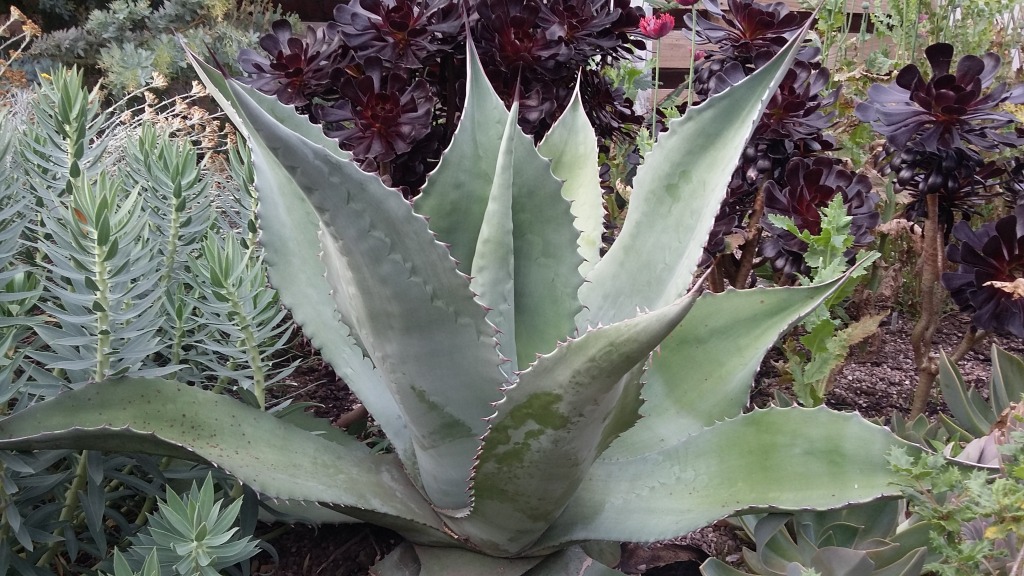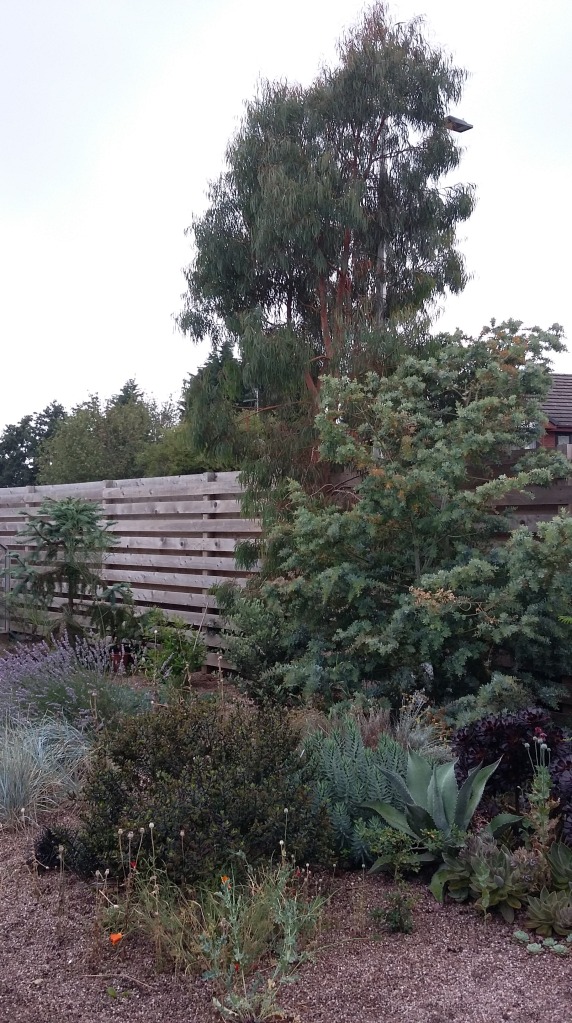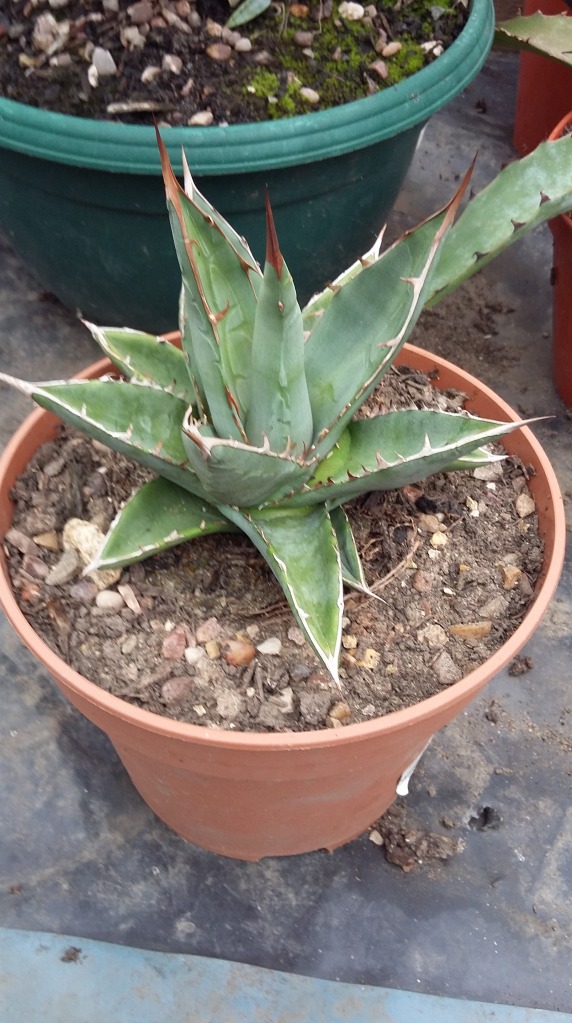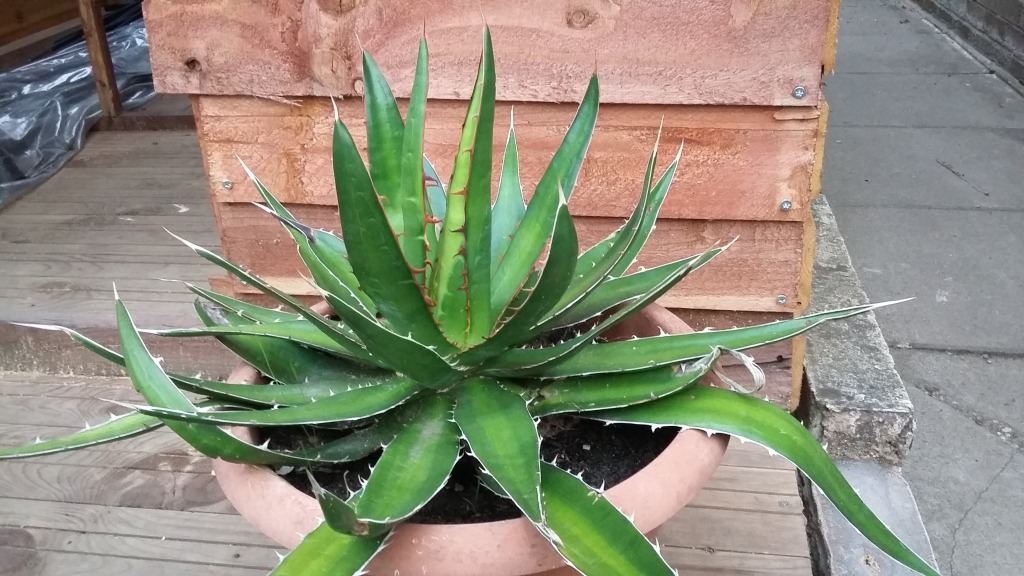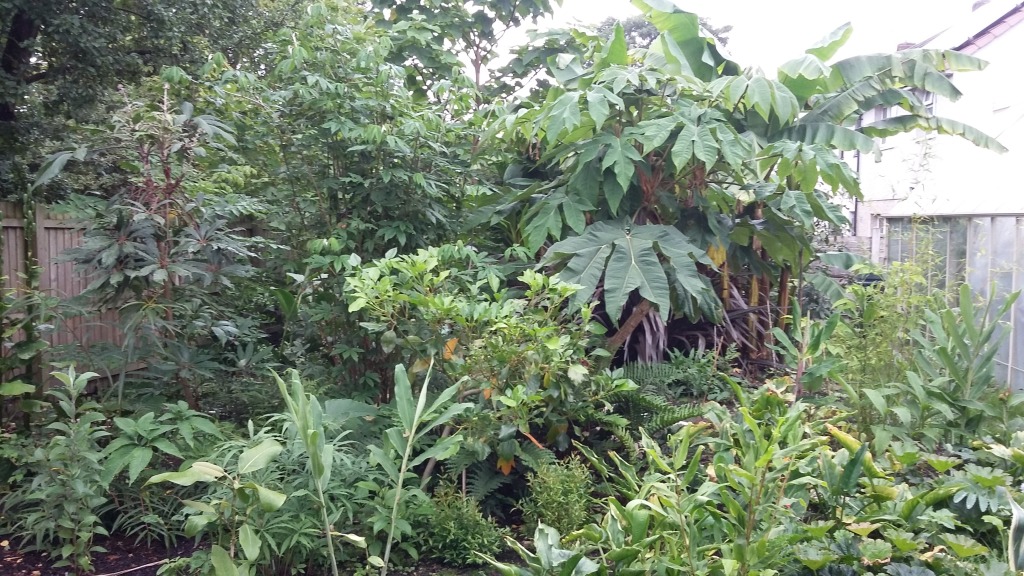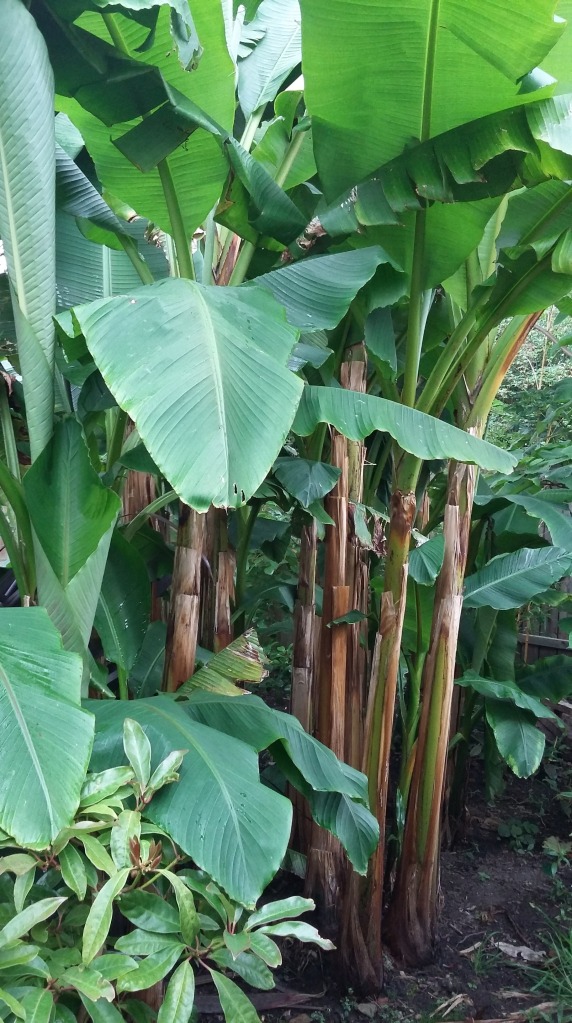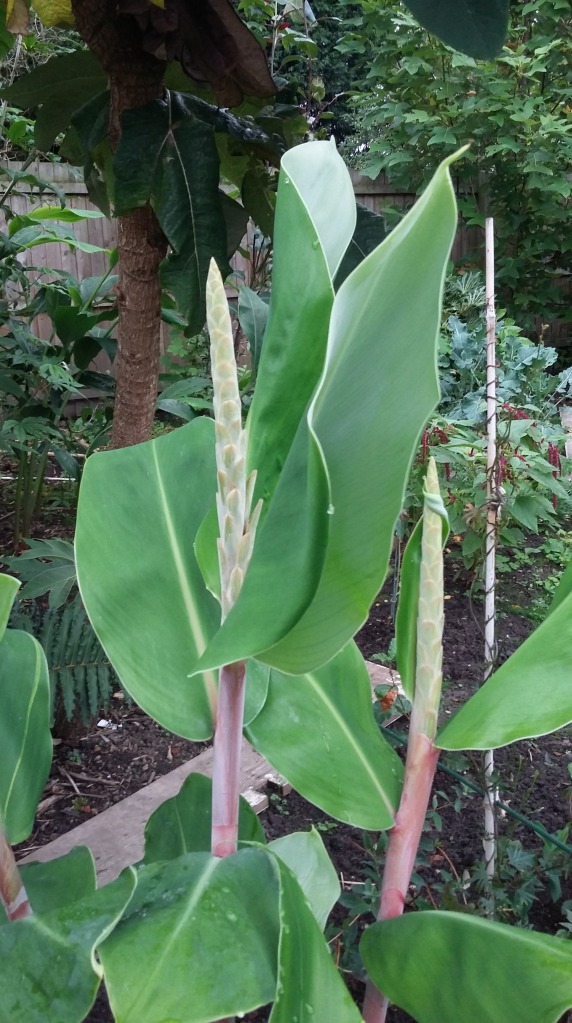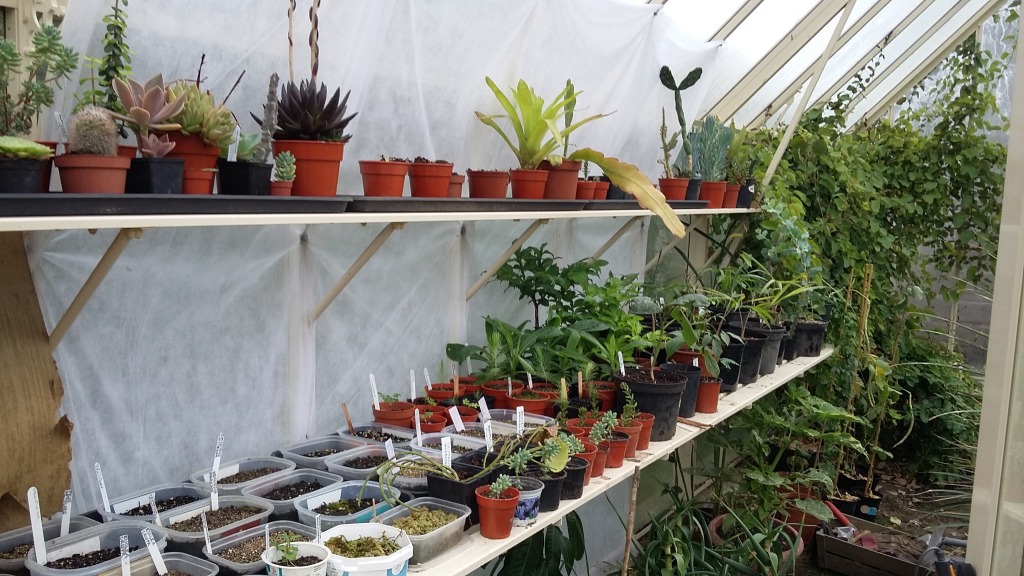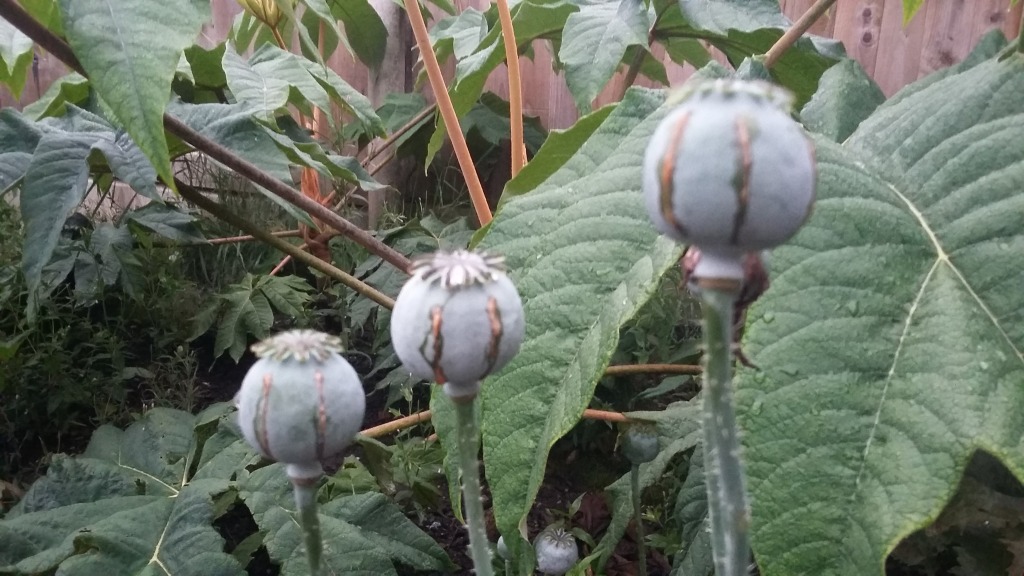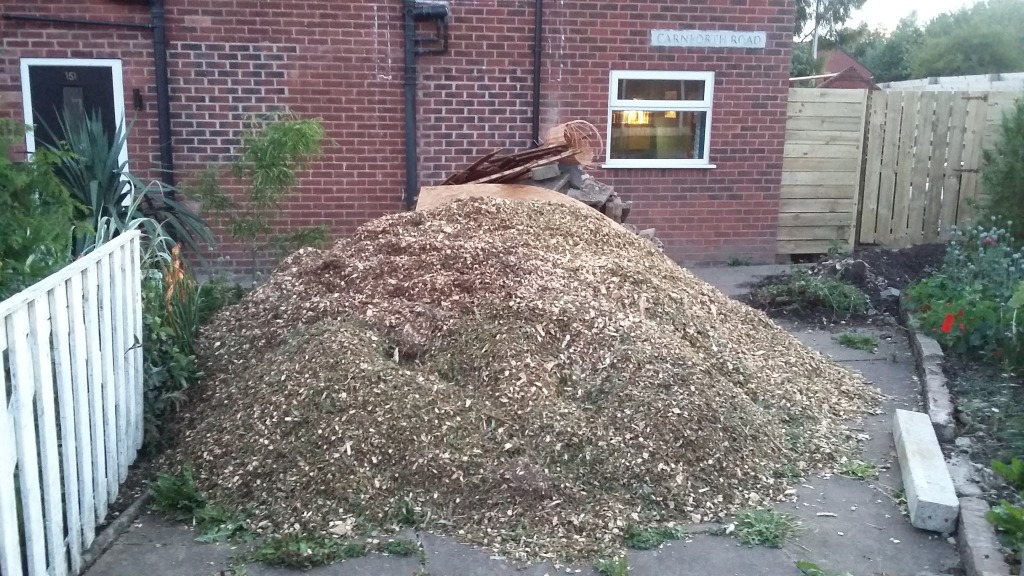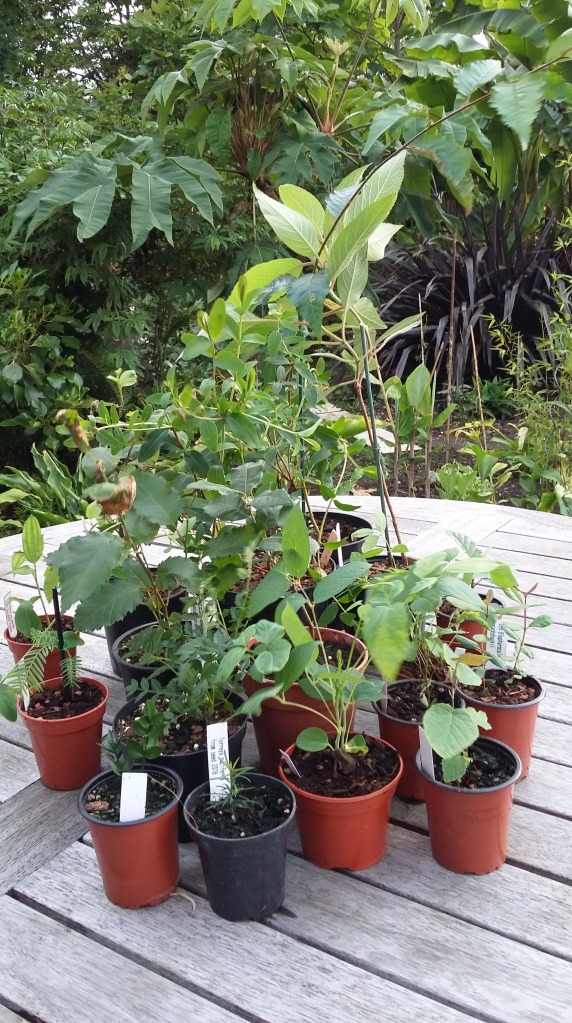The big eucalyptus was rubbing a branch or two on the fence. While I was removing the offending bits I noticed that woody seedpods had formed. The last I remember, all it had was flowers that seemed never to open. There are stacks of those again, but clearly last year’s did open at some point and were pollinated. This species is Eucalyptus nicholii. Here are the capsules:
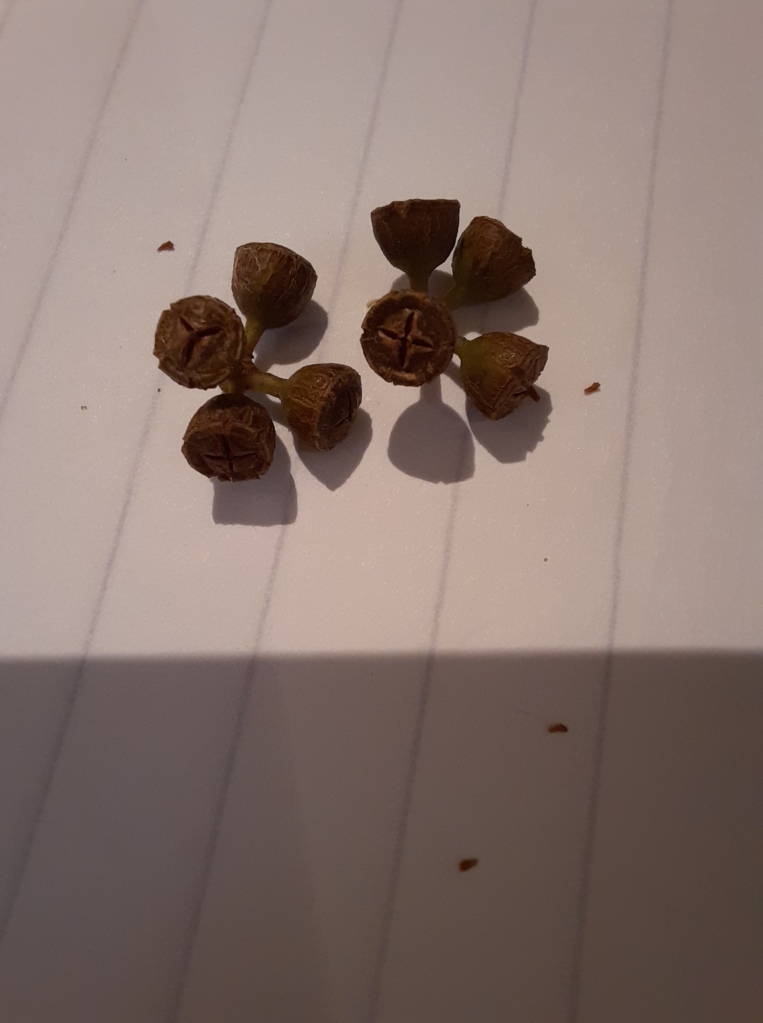
The seed itself is very small. I chopped the nutlets up with a pair of scissors, rubbed the bits between the palms of my hands and scattered the result on to a seed tray.
All through the summer, i’ve been expecting the many fruits on Passiflora actinea to ripen. All I had was a rock hard exterior and a dessicated interior. Last week, I discovered a larger one. Though still smaller than a ping pong ball, the shell gave slightly to the touch. Opening it up, there was the most delicious passionfruit pulp at last!
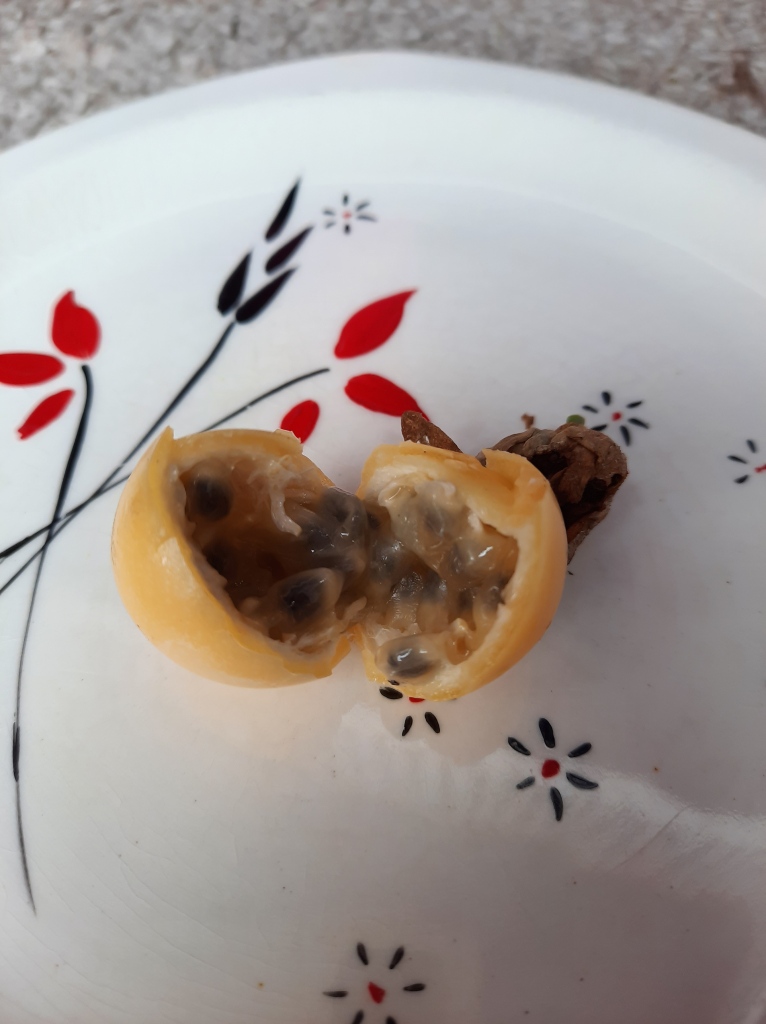
The texture is the same as the passionfruit found in shops here. The taste is much less acid and slightly lemony. Having eaten the pulp, I spat out the seeds, washed, dried and sowed them.
